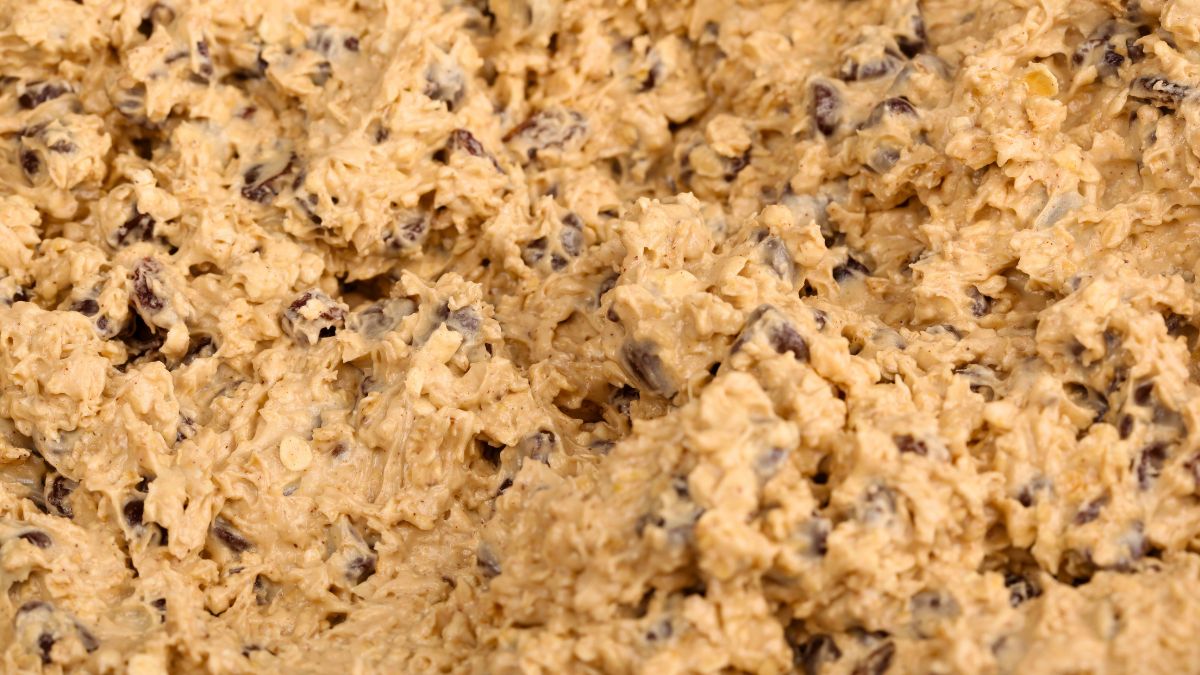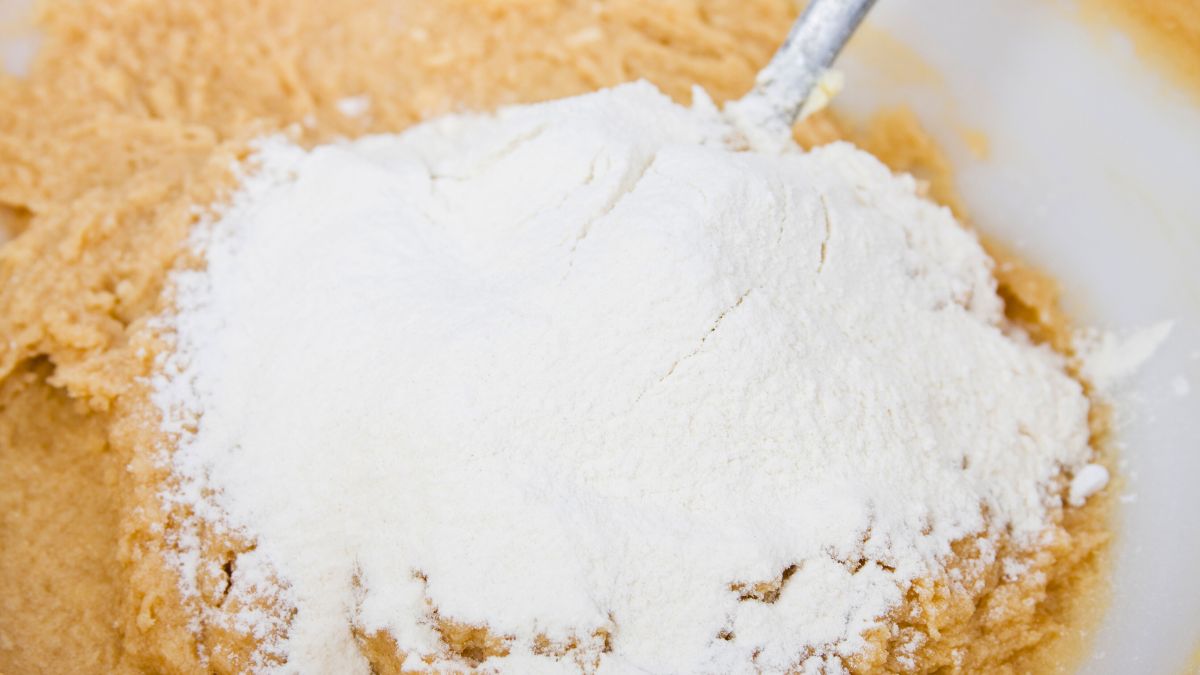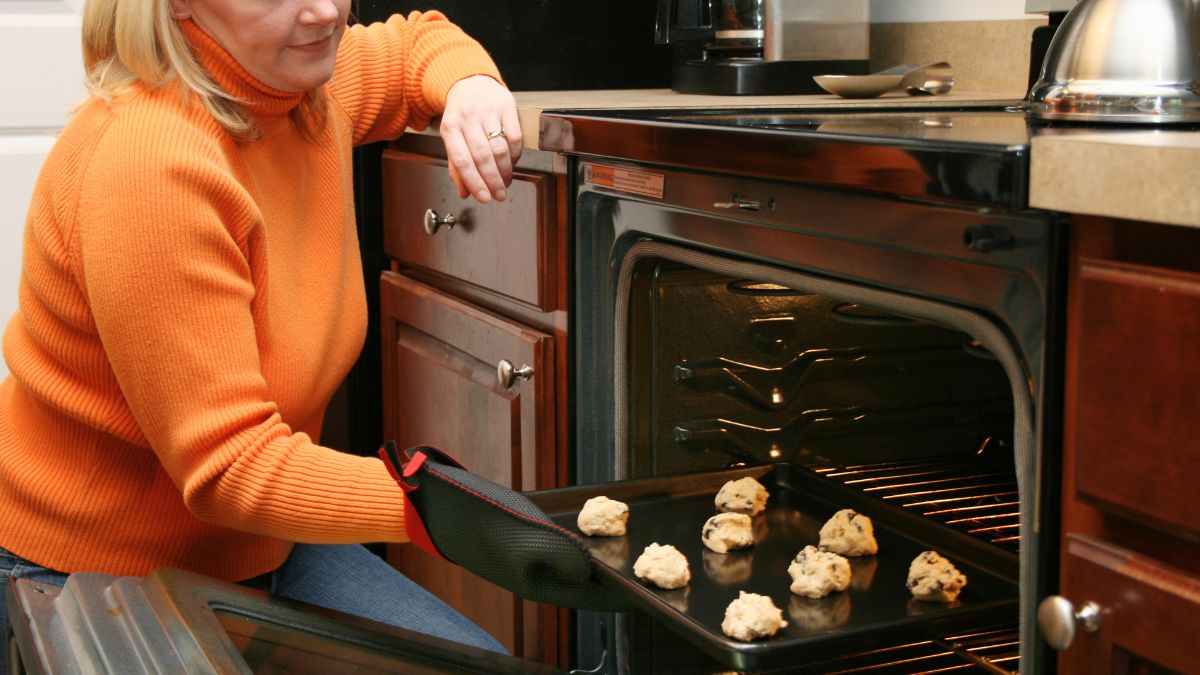4 Quick Fixes for Too Much Butter in Cookies

Have you ever been baking chocolate chip cookies and accidentally added way too much butter to the dough? I know I have. There I was, in my zone, stirring in butter like it was going out of style. Before I knew it, I had a pool of butter in the bowl and cookie dough that was more grease than dough. But I survived, and now I have a story to tell! So, what are the best fixes for too much butter in cookies?
To save too buttery cookies, add a bit more flour, one tablespoon at a time, until the dough firms up enough to hold its shape. Let the dough chill in the fridge, and reduce the baking temperature by 25 °F.
At first, I panicked, thinking I had ruined the batch and would have to start over. But after a few deep breaths, I realized there were a few quick fixes I could try to salvage my butter-heavy dough before throwing it in the towel. Here are some ways to fix cookie dough with too much butter so you can bake those cookies after all.
What Happens if You Put Too Much Butter in Cookies?
The excess butter prevents the dough from holding its shape, so my cookies spread out into flat, crispy disks as they bake. And with all that extra grease, they just don’t have the rich, chewy texture I want; instead, they are flat and crispy.
So, if your cookie dough seems overly greasy or soft, you’ve probably added too much butter. It has a greasy, slippery texture that makes it hard to scoop and roll into balls. When you drop it onto the baking sheet, the dough won’t hold its shape and will spread out.
I can tell you from experience that it’s an easy mistake to make! But don’t worry; you can still save the day!
How to Fix Cookie Dough with Too Much Butter?
When I use too much butter in my cookies, I end up with a dough that’s way too soft and greasy. To fix the problem, there are a few tricks I’ve learned, and with these simple fixes, you can rescue cookie dough with too much butter and end up with soft, chewy cookies just like you want. Practice makes perfect!
Add in Extra Flour

The most obvious solution is to add more flour. For every extra tablespoon of butter, add about 2 tablespoons of flour. Mix it in 1/4 cup at a time until the dough comes together and is no longer greasy. Avoid adding too much flour, or your cookies may become tough and dry.
Check the consistency after each addition and stop when the dough is smooth and slightly sticky.
This helps absorb the excess fat and gives the cookies more structure. You may need to extend the baking time by a couple of minutes since the extra flour will make the dough thicker. But with some trial and error, you’ll get light and buttery cookies that aren’t oily or crumbly.
Chill the Dough
Putting the dough in the fridge for a few hours before baking can help. The cold temperature will cause the butter to firm up, which prevents it from melting into pools as the cookies bake. When you roll the dough into balls to place on the baking sheet, the chilled butter will create little air pockets, leading to lighter, fluffier cookies. Let the dough chill for at least 2 to 3 hours or overnight.
By chilling the dough, the butter has a chance to firm back up before baking, so it holds its shape better. The result is a cookie with a better texture that’s not as greasy. You’ll be happy you took the time to let the dough rest in the fridge – your cookies will turn out much improved!
Increase the Baking Time

Baking the cookies a couple of minutes longer can help firm them up. I usually start with 2-3 extra minutes, but I need to check on them frequently so they don’t burn. The longer baking time will allow the butter to melt and the cookies to set as they cool.
Sometimes, a little extra time in the oven is all it takes to transform a batch of butter-heavy cookies into perfect, chewy treats. Keep baking and testing the cookies with the “jiggle test” — gently shake the baking sheet to see if the cookies still wobble. Once they’re set but still a bit soft in the center, remove them from the oven.
I’ve also found that reducing the baking temperature by about 25 °F mid-baking helps. The longer time of baking will help melt the excess butter and allow it to drip down into the pan, leaving you with cookies that aren’t overly greasy.
Add Mix-Ins to Achieve the Perfect Cookie Dough Consistency
Adding 1/4 teaspoon of baking soda will make the cookies chewier, helping mask the greasy mouthfeel, while adding 1 tablespoon of cornstarch will make the cookies crisper, absorbing excess butter. Mix in and chill as above before baking.
Chopped chocolate, nuts, or other mix-ins are a great way to balance out butter-heavy dough. Fold in 1/2 to 1 cup of add-ins of your choice. The mix-ins will soak up some of the butter, and the cookies will turn out perfect.
You can also add a bit of baking powder, about 1/2 teaspoon. The chemical reaction will create air bubbles that lighten the dough. Your cookies may spread out still, but they won’t end up quite as dense.
Lastly, if possible, I scoop slightly smaller balls of dough onto the baking sheet so the cookies have less surface area to spread. They’ll still be a bit thinner than intended but won’t melt into puddles.
Can You Still Bake the Cookies with Excessive Butter?
You can always bake your cookies no matter what happens to the cookie dough.
However, you won’t get the same consistency and taste as you wish in the first place unless you apply some of the quick solutions I mentioned above.
Chilling cookie dough for at least 30 minutes before baking will firm up the dough and prevent the cookies from spreading out too much.
Once chilled, bake one test cookie to check the consistency before baking the whole batch. If it spreads out too much or seems greasy, add more flour and chill the dough again before proceeding. It’s much easier to fix a small amount of dough versus an entire batch of cookies!
Plus, reduce the baking temperature by 25 °F since the lower heat will allow the cookies to set before the butter melts, so they’ll retain their shape and texture. Or bake them just a little longer.
If you do not do any of that, your cookies will have a crispy outside but will still remain uncooked on the inside. The fat and moistness in butter can enhance or inhibit gluten development, directly impacting cookies’ shape, spread, and texture.
How to Know if You Put Too Much Butter?
If you put too much butter, your dough will be clumpy and greasy, in which case you will need to add some dry ingredients to help absorb the excess fat and give the dough a better consistency to roll and bake.
Using cold butter from the fridge will make your cookies less greasy. Cold butter won’t incorporate into the dough as quickly, so you’re less likely to add too much. Moreover, following a recipe closely and measuring ingredients accurately is essential to ensure the cookies turn out as desired.
What Should a Perfect Cookie Dough Look Like?

A perfect cookie dough should be slightly sticky but still hold its shape when you roll it into balls. You should avoid adding too much flour since the dough will become tough and can’t be rolled down nicely. Besides, if you over-mix your dough, it will become dry and crumbly.
It may require some experimenting to get it just right, but with a few fixes, your too-buttery cookie dough can be revived and turned into delicious cookies! Baking is all about learning from your mistakes.
I’m curious: What was the biggest mistake you’ve ever made when baking cookies? I’m excited to read all about it in the comments below!
